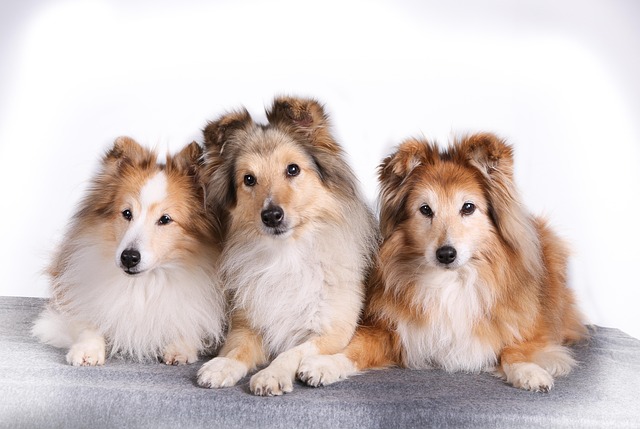
How can I tell if my dog's heatstroke is serious
Let’s be real: It’s a sticky August morning in Los Angeles, and you took your 2-year-old Golden Retriever, Max, for a walk a little later than usual
Do dogs shed more in winter or summer? It’s a question that leaves new owners staring at their lint rollers, especially when their golden retriever leaves a trail of fur across the couch—whether it’s the frosty days of December or the humid afternoons of July. Let’s untangle this with real-life examples and what vets and trainers actually recommend.
First, let’s get the science straight: dogs shed to adapt to temperature changes, but their big coat switch happens twice a year, not strictly in one season. In fall, as days get shorter, they grow a thick undercoat for winter—think of it like putting on a warm sweater. Then, when spring arrives (those sunny Texas mornings where the air smells like bluebonnets), they shed that heavy layer to stay cool. So in late winter, you might notice more loose fur as they start prepping for the transition, while summer shedding is usually lighter, just regular maintenance. Breeds with double coats—like huskies or border collies—shed way more during these “blowing coat” seasons than single-coated pups like poodles.

What does this mean for your daily routine? Grooming becomes your best friend. In those peak shedding months, brush them 2-3 times a week with a slicker brush (the kind that looks like a small hairbrush with short, dense bristles). Apartment dwellers, listen up: keep a lint roller by every door and vacuum high-traffic areas twice a week—your neighbors won’t appreciate fur sticking to their clothes in the elevator. When you’re out walking in the neighborhood park, a quick brush before leaving can prevent their fur from cluttering benches or playgrounds—that’s good doggy etiquette, right up there with picking up poop (which, reminder, is legally required in every U.S. state, with fines up to $200 in cities like Denver).
Now, let’s talk about what’s not okay: never scold or hit your dog for shedding. Shedding is natural, not misbehavior. Instead, turn grooming into bonding time—praise them with “good girl!” and a treat when they sit calmly for brushing. That’s positive reinforcement, the gold standard here in the U.S., where punitive training methods are frowned upon and even illegal in some states. And don’t forget the basics: keeping up with rabies vaccines isn’t just a rule (required by law nationwide) but part of responsible pet ownership, right alongside keeping their coat healthy with a diet rich in omega-3s—ask your vet about adding fish oil if you notice excessive dryness.
So, back to the question: they shed most during seasonal transitions, not strictly winter or summer. With regular grooming, patience, and knowing the rules, you’ll keep both your pup and your apartment fur-free (or at least fur-manageable).

Let’s be real: It’s a sticky August morning in Los Angeles, and you took your 2-year-old Golden Retriever, Max, for a walk a little later than usual

You're enjoying a summer afternoon at the park when you notice your dog has stopped panting and appears disoriented - their gums are bright red

Let’s paint the picture: You’re in your Denver apartment, watching your 4-year-old Boston Terrier, Ruby, plop down mid-play session with her favorite toy

Many dog owners notice their pets nails seem shorter after regular walks,but how much does this daily activity actually help?The answer depends on where you walk—concrete sidewalks or asphalt streets gently file nails as a dog's paws hit the ground

Most dog owners notice their pup scooting across the carpet at some point, but few connect it to impacted anal glands. These small sacs near a dog’s rectum secrete a scent for marking territory

Most vets agree that regular dog teeth cleaning is key to avoiding painful dental issues later. For healthy adult dogs, a professional cleaning at the vet’s office every 12 to 18 months usually works well.